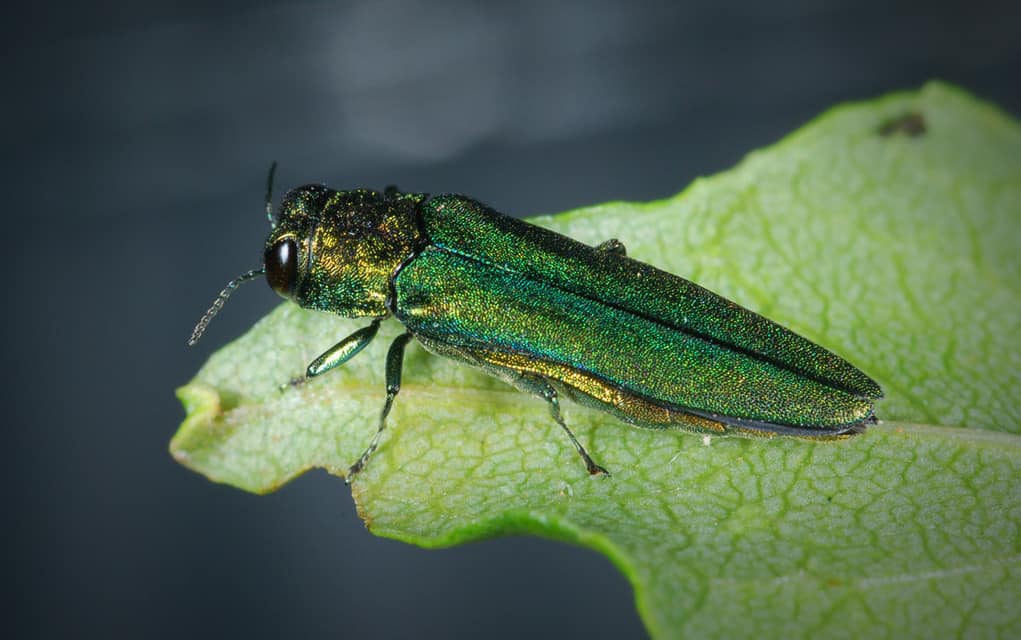The native ash trees of the Waterloo Region are unlikely to get much of a respite this season from the emerald ash borer, which has continued to decimate trees across much of the southwestern Ontario. Locally, that may mean the collapse of much of the ash tree population, which has been suffering a decline for years.
“In the townships we’re starting to see woodlots where the ash trees are pretty much all dead or certainly heavily infected. So we’re seeing a lot of ash die off,” said Albert Hovingh, a forester with the Region of Waterloo. “The last five years we’ve been noticing it, and then this year it’s fairly severe in some areas.”
The prognosis is especially grim for the local trees, as there are few effective measures available to governments to combat the spread of the invasive beetle species, which also has few natural predators to keep its numbers in check.
“It’s pretty much impossible to kill the ash borer. Just by sheer numbers, to kill it you have to start using insecticides, and that’s not something you really want to get into,” notes Hovingh. “You’d have to be aerially spraying woodlots and cities to do anything, and it’s not even sure that that would be very effective at all. So there’s no plan for eradicating the insect.”
A costly treatment does exist, where susceptible trees could be injected with a natural insecticide, but would not be practical to use on a large scale.
In Woolwich, township recreation director Ann McArthur noted that the township was looking at removing the high-risk trees, but was not opting for treatment.
“The township has started to assess parks, woodlots and trees adjacent to trails to identify high risk trees affected by the emerald ash borer and undertaking to have those trees removed,” said McArthur.
“The township is not planning to treat any trees infected with emerald ash borer at this time. We are educating, assessing, planning and taking the necessary actions to address effected trees in the later stages of decline through a contractor.”
With few factors keeping the beetles from multiplying, they will likely continue to feed on the local population of ash trees until they’ve exhausted their food supply, after which they would start to die off. However, as new ash trees regenerate to replace the old ones, we could expect to see another resurgence of the ash borer and a repeat of the process cyclically.
“It’s not totally certain that the trees will completely disappear from the landscape, but it certainly will be far fewer than there are now,” said Hovingh.
While the ash borer may be amongst the most damaging invasive species to enter the region, others, such as the giant hogweed and wild parsnips are proving a tough, if more manageable challenge.
“Giant hogweed has been on the radar for several years, and it’s actually throughout Ontario,” said Angelo Apfelbaum, manager of licensing and enforcement for the region. “If you get the liquid from giant hogweed onto your skin and then its exposed to sunlight, it almost reacts like a burn. So you can get a third degree burn from it.”
“We have enough public education about giant hogweed, so it’s under control. We’ve seen it’s numbers reduced greatly within the Region of Waterloo over the last five years, which is good news,” noted Apfelbaum.
“Its habitat … is wet areas. So near shorelines, ditches things like. Generally in farm fields or along the grand river. So wet areas along ditches near farm fields or along the Grand River. Because it’s a river and giant hogweed likes moisture.”
The hotspots for giant hogweed in the township are in the Three Bridges area along with parts of Hawkesville, he notes.
Because of the potentially damaging sap produced by giant hogweed, along with its cousin, the wild turnip, Apfelbaum encourages people to take the correct precautions before dealing with the plants. The giant hogweed, however, because of its size – up to five metres in height – is best dealt with by the region or other professionals.
“[It’s] just about the only weed we encourage you to call someone that can apply a herbicide to it to kill it,” he said. “The fact that you have to get close to it, you have to dig it out, and that means you run the risk of getting exposure to liquid that comes out of it.
“If you are intent on doing it, make sure you wear something: cover your face, cover your eyes, cover your skin, gloves etcetera,” he added.









